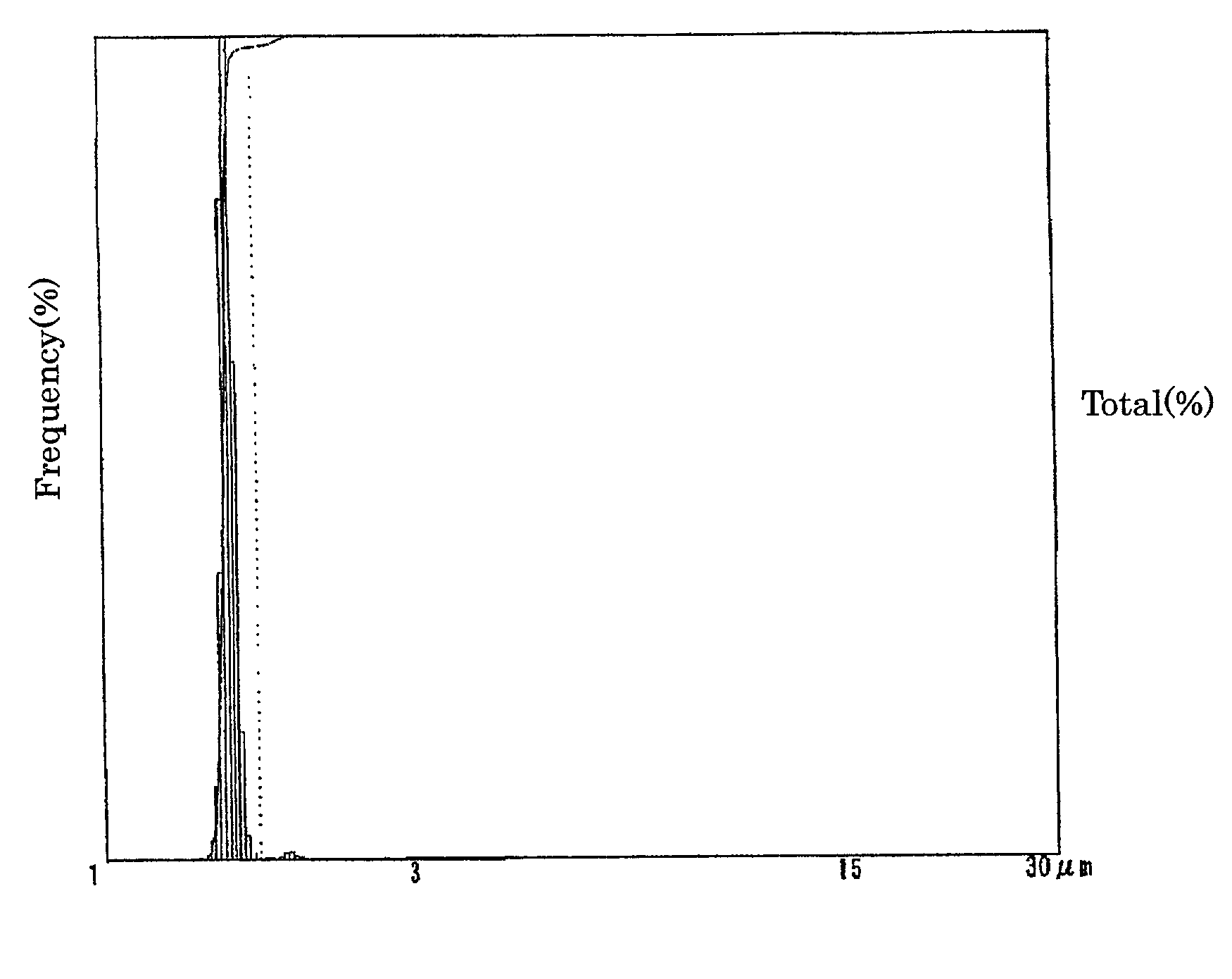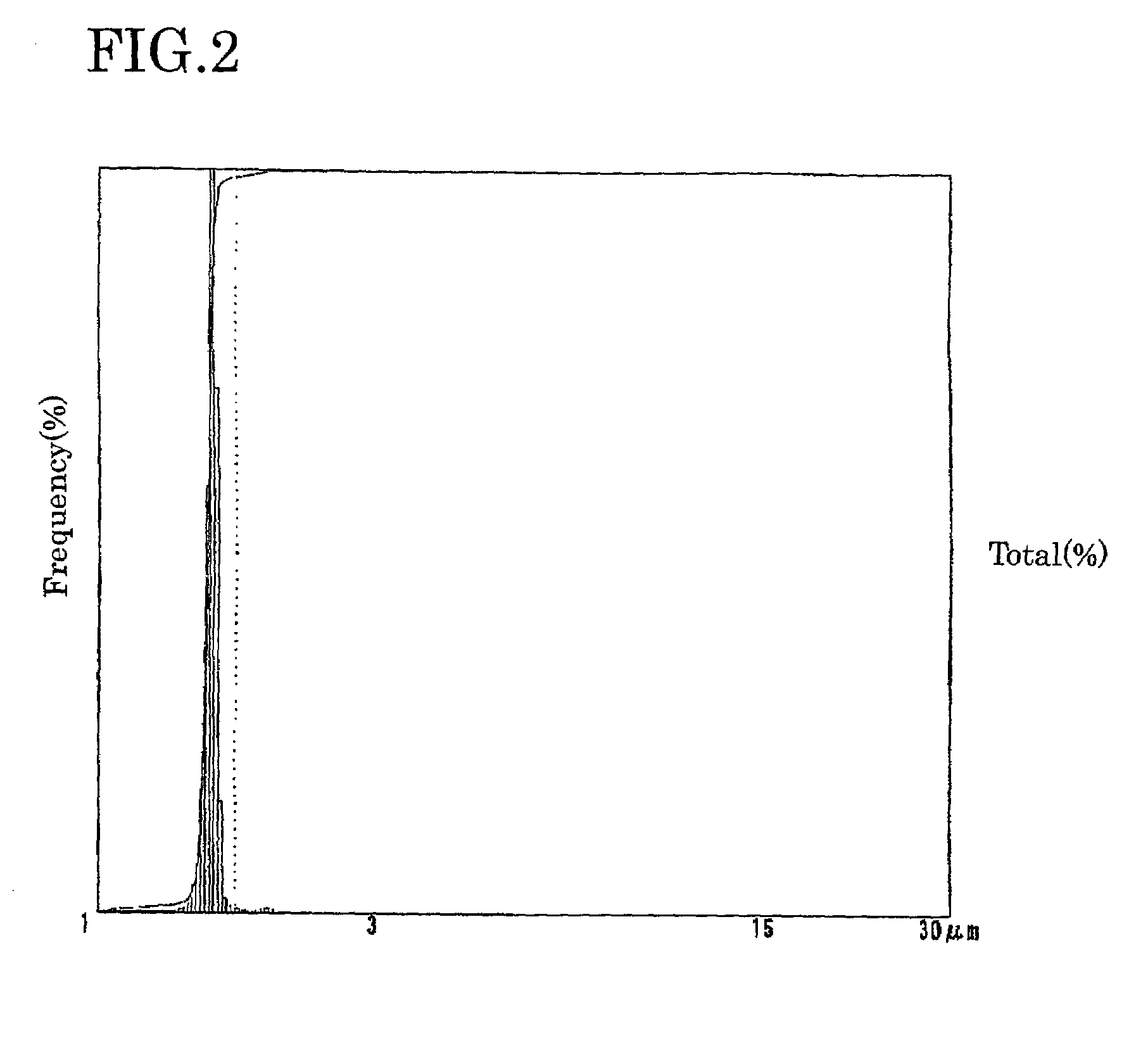Electrolyte solution for particle measuring apparatus, and particle measuring method using same
a technology of electrolyte solution and particle measuring apparatus, which is applied in the direction of instruments, non-metal conductors, conductors, etc., can solve the problems of water cannot be used as the solvent for electrolyte solution, and difficult to accurately measure the number and size of particles
- Summary
- Abstract
- Description
- Claims
- Application Information
AI Technical Summary
Benefits of technology
Problems solved by technology
Method used
Image
Examples
experimental examples
[0047]Experimental examples of the invention will now be described.
example 1
(Electrolyte Solution Preparation 1)
[0048]For this operation, methanol was used as the organic solvent, sodium chloride was used as the inorganic salt and malic acid, lactic acid, 2-aminoethanol and betaine were used as auxiliary substances.
[0049]Table 1 shows equimolar amounts of each of the auxiliary substances with respect to 1.00 g of sodium chloride.
[0050]
TABLE 1auxiliary substancesmalic acid2.29 glactic acid1.48 mL2-aminoethanol1.03 mLbetaine2.00 g
[0051]First, each of the substances was prepared based on Table 1, each was dissolved in 100 mL of methanol, and the electric conductivity was measured.
[0052]Sodium chloride was added to each of the prepared solutions at equimolar and ½ molar amounts with respect to the auxiliary substances (1.00 g and 0.50 g of sodium chloride), and the electric conductivity was measured.
[0053]Table 2 shows the results of these measurements.
[0054]
TABLE 2electricsodiumconductivityauxiliary substanceschloride(mS / cm)malic acid2.29 g0.00 g0.2202.29 g0.5...
example 2
(Electrolyte Solution Preparation 2)
[0056]For this operation, of the combination of substances used in electrolyte solution preparation 1 there were selected methanol as the organic solvent, sodium chloride as the inorganic salt and betaine as the auxiliary substance.
[0057]First, 1.20 g of sodium chloride was dissolved in 100 mL of a betaine / methanol solution containing 4.00 g of dissolved betaine. Sodium chloride was then further added 0.10 g at a time to determine the saturation amount of sodium chloride in 100 mL of the betaine / methanol solution (containing 4.00 g of betaine). The electric conductivity of the solution was measured at each state of sodium chloride addition. The results are shown on Table 3.
[0058]
TABLE 3electricDissolvedconductivitybetaine (g)sodium chloride (g)completely?(mS / cm)4.001.20Yes9.144.001.30Yes9.644.001.40Yes10.194.001.50No10.550.001.00No3.30
[0059]Table 3 indicates that the saturation amount of sodium chloride in the solution was higher than at least 1.4...
PUM
| Property | Measurement | Unit |
|---|---|---|
| electric conductivity | aaaaa | aaaaa |
| electric conductivity | aaaaa | aaaaa |
| electric conductivity | aaaaa | aaaaa |
Abstract
Description
Claims
Application Information
 Login to View More
Login to View More - R&D
- Intellectual Property
- Life Sciences
- Materials
- Tech Scout
- Unparalleled Data Quality
- Higher Quality Content
- 60% Fewer Hallucinations
Browse by: Latest US Patents, China's latest patents, Technical Efficacy Thesaurus, Application Domain, Technology Topic, Popular Technical Reports.
© 2025 PatSnap. All rights reserved.Legal|Privacy policy|Modern Slavery Act Transparency Statement|Sitemap|About US| Contact US: help@patsnap.com



